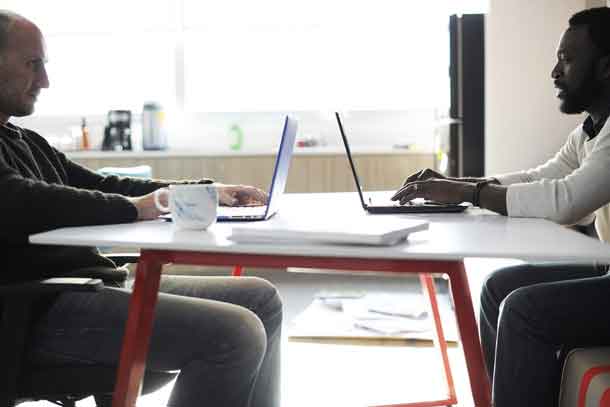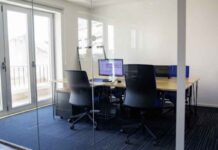A startup office is marked by a dynamic environment that has several basic characteristics that make it outstanding from workplaces of traditional style. With an increasing number of startups trying to prove their mettle and worth in the market, even established businesses are noting and introducing these contemporary features of design into their own concepts for the renovation of their offices.
Collaborative Spaces
Staid and stable conference rooms are something that you cannot find in most startup offices. These days, collaborative spaces are viewed not simply as spaces to congregate in and impress clients who walk in. These also serve as places where teams may work with each other on various projects at any time that they want to deal with things and work together. Features such as projection screens, flat-panel digitized whiteboards, modular tables, movable walls, etc. make it easy for teams to come together and start working in a well-decorated and fetching room that is away from the din and commotion of regular office environments.
A few teams might like to gather in such collaborative meeting spaces several times each week, so as to coordinate and have discussions on their upcoming projects. Startup office spaces prioritize the freedom of employees, and such collaborative places can effectively ensure that there are better productivity and higher output due to the higher level of freedom that is offered to the workers.
Open Seating Layouts
Cubicles in offices are not very appropriate for the gutsy ethics and standards that define most of the startup enterprises. Thus, offices started and set up by young entrepreneurs tend to have open seating arrangements. Here, individual desks are replaced with large sized benches that consist of individual working stations located close to a centralized office workroom. In a few cases, one can also find c-suite leadership in an open seating layout with the team. Functionally and symbolically, closed walls and doors are sharply contrasted in purpose or character to the go-getting ambiance that defines all levels of these organizations.
Startups realize that humans are born to be social creatures and have interactions with one another. Research has revealed that employees get a boost in their mooda with an open plan. Thus, modern offices are designed often to promote collaboration. This is because startups understand that employees work better and will foster long-term productivity when they are allowed to interact freely with each other.
Creative Lounge Spaces
Startups focus on the satisfaction and comfort of workers. Thus, the employee lounge is better designed and more stylish in the best startup offices. In traditional offices, you will find armchairs and sofas only in executive offices and waiting rooms. The lower employees need to adjust themselves in a drab coffee room offering only stiff chairs strewn around a small center table when they wish to take a break from work. The shift to a focus on employee comfort means that a lot of startup agencies have a central living room area that is ideal for taking breaks and to provide team members – who work best in a comfortable, relaxed setting – with more room to relax and visit with friends. Generally, the lounge areas in startup offices are integrated with presentation screens, power strips, and other training equipment that lend these a multipurpose feel.
Common Spaces
In startup offices, informal areas are designed for ad-hoc meetings and to allow workers to collaborate easily on large projects, which make workplaces more community-oriented and inclusive rather than isolated and mechanical. Collectively working on big problems can improve productivity significantly. Common areas are great to be in, and startups use these areas to interact with employees for some time, thus building a rapport with them.
Functional Buildings
Large-sized corporate offices are more and more found to be equipped with gyms, bars, libraries, restaurants, and cafes. Offices like those of Google are classic examples of the same, with the philosophy being that satisfied workers like to stay at the office for a longer time. Generating ideas is part of the game, and thus many workers do not have any idea whether a great idea came from a worker at his desk or an employee at the office gym. Both parties remain content as long as the ideas keep flowing.
Sustainability
In startup office design projects, green happens to be the new black. More and more businesses wish to design their office spaces in an eco-friendly and sustainable way. This is not simply for the workers. For many workers, environmentalism is often a prime concern in their personal and professional lives. Modern startup offices follow ‘green’ standards and you can find sustainable and eco-friendly choices in everything – such as interior décor where bamboo is being used. Water harvesting tanks are used to take care of the supply of water through the entire office building and make sure that there is a minimal drain of Earth’s resources.
Options for Startups
Finally, when it comes to startup office spaces, startups can choose between renting a dedicated place out or alternatively working from a coworking space. Coworking spaces have gained popularity in recent years thanks to high profile alumni such as Instagram coming out of startup office spaces such as SOMAcentral and shared working spaces such as WeWork expanding to many countries and cities and establishing a base in every corner. Coworking spaces allow startups to save on the costs in the most fragile stage of a company’s life cycle and focus on the core activities of the startup instead of worrying about conference rooms and common spaces and handling day to day operations that are better managed by real estate professionals.







